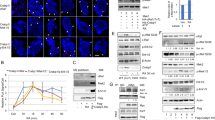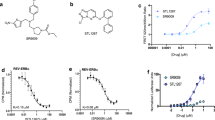Abstract
The chimeric receptor, RARα/VDR, contains the DNA-binding domain of the retinoic acid receptor (RARα) and the ligand-binding domain of the vitamin D receptor (VDR). The ligand-binding properties of RARα/VDR are equivalent to that of VDR, with an observed Kd for 1α,25 dihydroxy-vitamin D3 (D3) of 0.5 nM. In CV-1 cells, both RARα and RARα/VDR induce comparable levels of ligand-mediated transcriptional activity from the retinoic acid responsive reporter gene, β(RARE)3-TK-luciferase, in the presence of the ligand predicted from the receptor ligand-binding domain. Two chimeric RAR receptors were constructed which contained the ligand-binding domain of the estrogen receptor (ER): RARα/ER and ER/RARα/ER. Both RARα/ER and ER/RARα/ER bind β-estradiol with high affinity, and are transcriptionally active only from palindromic RAREs (TREpal and/or (TRE3)3). Only RARα/VDR matched in kind and degree the functional characteristics of RARα: (1) maximally active from the β(RARE); (2) moderately active from the TREs; (3) inactive from the retinoic X receptor response elements (RXREs) ApoA1 and CRBP II; (4) forms heterodimers with RXRα; and (5) binds to the βRARE. F9 embryonal carcinoma cell lines were generated which express RARα/VDR mRNA (F9-RARα/VDR cells) and compared with F9 wild-type (F9-Wt) cells, which do not express VDR mRNA. Treatment with all-trans retinoic acid (tRA) inhibits cell growth and induces the differentiation morphology in both F9-Wt and F9-RARα/VDR cells; whereas, treatment with D3 is similarly effective only for F9-RARα/VDR cells. It is concluded RARα/VDR is an useful ‘tool’ to pinpoint, or to augment transcription from RAREs in gene pathways controlled by RAR without inhibiting the retinoid responsiveness of endogenous RARs.
This is a preview of subscription content, access via your institution
Access options
Subscribe to this journal
Receive 12 print issues and online access
$259.00 per year
only $21.58 per issue
Buy this article
- Purchase on Springer Link
- Instant access to full article PDF
Prices may be subject to local taxes which are calculated during checkout
Similar content being viewed by others
Author information
Authors and Affiliations
Rights and permissions
About this article
Cite this article
Pemrick, S., Abarzúa, P., Kratzeisen, C. et al. Characterization of the chimeric retinoic acid receptor RARα/VDR. Leukemia 12, 554–562 (1998). https://doi.org/10.1038/sj.leu.2400937
Received:
Accepted:
Published:
Issue Date:
DOI: https://doi.org/10.1038/sj.leu.2400937



